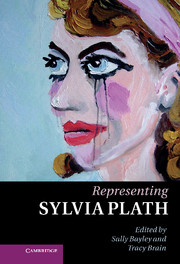Book contents
- Frontmatter
- Contents
- Illustrations
- Notes on contributors
- Acknowledgements
- Abbreviations
- Introduction
- Part I Contexts
- Part II Poetics and composition
- Chapter 5 ‘The trees of the mind are black, the light is blue’
- Chapter 6 Coming to terms with colour
- Chapter 7 ‘Madonna (of the Refrigerator)’
- Chapter 8 ‘Procrustean identity’: Sylvia Plath’s women’s magazine fiction
- Part III Representation
- Bibliography
- Index
Chapter 6 - Coming to terms with colour
Plath’s visual aesthetic
from Part II - Poetics and composition
Published online by Cambridge University Press: 07 September 2011
- Frontmatter
- Contents
- Illustrations
- Notes on contributors
- Acknowledgements
- Abbreviations
- Introduction
- Part I Contexts
- Part II Poetics and composition
- Chapter 5 ‘The trees of the mind are black, the light is blue’
- Chapter 6 Coming to terms with colour
- Chapter 7 ‘Madonna (of the Refrigerator)’
- Chapter 8 ‘Procrustean identity’: Sylvia Plath’s women’s magazine fiction
- Part III Representation
- Bibliography
- Index
Summary
Coloured inks
Colour plays a central role in Plath’s visual aesthetic, illuminating both her writings and the artwork she produced as a child and a student. Her delicate use of the primary colours in an early drawing accompanying a letter to her mother (1940), the elaborate variations on pink, green and blue of her technicolor Snow White (c.1944–1947), her artistic balancing of cold and warm colours in her Chinese Jug pastel, as well as the lush palette of her doll outfits (1945) bear witness to precocious ‘colour-driven sensibilities’. Her impatience with conventional, merely decorative uses of colour is apparent in her bold, unexpected colour-schemes. The unnatural purple mountain reflecting the setting sun in The Happy Camper (1945) and the arresting, Picasso-like blue of her Portrait of Man (1946–1947), make it clear that she regarded colour as a privileged way of conveying an individual artistic vision. Its vital meaning for the child-artist appears in an early journal entry describing tapestries and flags seen at school: ‘Each one had a separate color glow – they were really living colors … held before the light – ahh! each color lived – shining for all it was worth! What reds and golds and blues there were. Everyone just groaned because they were so beautiful it just hurt to look.’ Far from being submitted to the artist’s purpose, colours have a life of their own for Plath; they appear as autonomous entities the sheer intensity of which can hurt the eye of the viewer.
- Type
- Chapter
- Information
- Representing Sylvia Plath , pp. 110 - 128Publisher: Cambridge University PressPrint publication year: 2011



